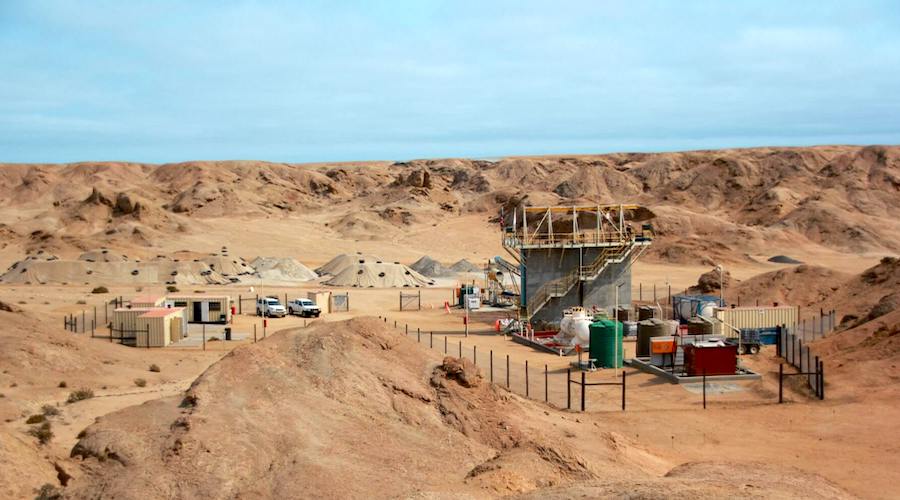Reflections on the new mining regulatory framework in Brazil
Since 2008, the proposal of a New Regulatory Framework in replacement to the current Mining Code (Decree-Law No. 227/1967) have been often discussed in and by the specialized media but only in 2011 the first concrete step was taken by means of the issuance of the Ministry of Mines and Energy Ordinance No. 121/2011 which ratified the 2030 National Mining Plan (“PNM 2030”) and took place aiming to be used as guidance to the policies and rules for the development of the mining sector in Brazil for the next 20 years.
Among other actions, PNM 2030 officially introduced the proposal of creating the National Council for Mineral Policy and the National Mining Agency in replacement to the National Department of Mineral Production – DNPM (Departamento Nacional de Produção Mineral – DNPM). Also pursuant to the PNM 2030, the new entities would promote the rational use of the mineral resources in Brazil and the supply of mineral resources to remote and difficult access areas.
In June of this year, almost two years after the PNM 2030, Bill of Law No. 5,807 (“PL 5807”) was officially presented by President Dilma Rousseff and the Minister of Mines and Energy, Edison Lobão, following most of the aforementioned guidelines.
Pursuant to PL 5807, the New Mining Regulatory Framework would encompass the creation of the New Mining Code, reformulate the current prospection and exploitation regimes and promote the adjustments of tax basis and rates of the controversial royalties’ policy of the sector – the so-called Financial Contribution for Mineral Exploitation – CFEM, as well as the creation of the National Mining Agencyto replace the DNPM and of the National Council of Mineral Policy that shall be responsible to outline the mining sector cornerstones, as originally forecasted by the PNM 2030.
Among the suggested and intended changes, the published text of the PL 5807 also comprises the modernization of the normative parameters of the current Brazilian mining legislation. In this sense, it is possible to see that an effort was made in order to adapt to the socio-environmental and technological context to current economic needs, including matters such as sustainability.
Despite the opinions of the market players are not unanimous to the benefits to be brought by the new rules, considerable part of the proposed changes are suggested with a view to incorporating practices already adopted by the international mining market into the Brazilian legal framework, which shall foster investment in the sector and minimize the legal uncertainty, triggered mostly by the diversity of normative sources and de-centralized control structure.
An example of the foregoing is the change in the current permit for mining exploration and prospecting activities – Autorização de Pesquisa, which is currently granted by the DNPM for the applicant to perform geological exploration works (such as the definition of the resources and the evaluation and determination of the production feasibility) in a certain area, during a certain amount of time (currently, from one to three years).
The permit for mining exploration and prospecting activities currently complies with the chronological order principle and the priority right in the granting of the mining concession to the first person that files for such right. In accordance with the original text of PL 5807 this rule shall be replaced by a regimen for the granting of authorization or concession depending on the strategic and economic relevance of the mineral potential to the country, preceded, each one, by its own public bidding (licitação) or public call (chamada pública). To some extent, such change represents a rupture of the current notion that the one who performs the research work shall have preference, if not exclusivity, as regards to the ownership of the mining concession.
Law No. 12,462/2011, which establishes the Differentiated Public Procurement Regime (Regime Diferenciado de Contratações), shall apply to the public bidding.
Along with the criteria for electing the winner bidder which shall enter into the concession agreements, PL 5807 comprises the following: (i) signing bonus, (ii) discovery bonus, (iii) participation of the Federal Governmentin the exploitation results, and (iv) minimum exploration program. These can be either combined with each other and/or with others to be created and informed by means of the public bidding process rules. The latter may also set up restrictions, limits or conditions for certain companies in the bid, in order to ensure the competition in the mining activities. Furthermore, minimum local content requirements shall be observed by the concessionaire.
The concession agreement shall cover all stages of the project (exploration, implementation, exploitation and mining closure). Once exploration stage is completed, the commerciality of the reserve shall be declared. The Economic Exploitation Plan and its revisions shall be governed by the concession agreement.
Although such measure was proposed for purposes of eliminating certain prerogatives attributable to those that benefit from the slowness of the current system which allows for the almost lifelong holding of certain research titles, if approved without the necessary adjustments, it may trigger an adverse effect to that intended. By eliminating the abovementioned prerogatives, the result could be that the research authorization is unreliable from the investors’ point of view. This could even foster the undue commerce of these titles by the researcher, once the guarantee of a return in the initial investment would no longer exist. Presently, the right to request a mining concession is exclusively granted to the one conducting the research (the so-called security of tenure).
As an exception to the aforementioned, PL 5807 proposes that the extraction of mineral substances used immediately in the civil construction of public facilities may be released of public bidding or public notice procedures. Such release will be subject to conditions and criteria which were not yet forecasted by the PL 5807. In this specific regard the PNM 2030 was more detailed rather than the PL 5807.
The original proposed text of the PL 5807 also sets out that the mineral deposits, whose use would be considered strategic or with increased economic potential, would be subject to the mining concession regimen, pursuant to competitive public bidding procedures. The proposed maximum terms attributable to the mining concessions regardless of the type of mineral would be of forty years, with prorogation of successive 20-year periods. It is worth to mention that among the proposed amendments to the PL 5807 (which are currently over three hundred) there are suggestions to shorten but also to lengthen such terms, which demonstrates that much still need to be discussed and adjusted in order to comprise and harmonize the different interests of the market players.
Presently, mining concessions do not have a validity term. As regards the CFEM (established by Law No. 8,001, dated March 1990), PL 5807 brings significant propositions to the extent that it proposes modification of the distribution of such collection among the public entities that benefit from the CFEM, with twelve percent to the Federal Union, of which sixty percent shall be assigned to the Ministry of Mines and Energy and forty percent to the National Technological and Scientific Development Fund – FNDCT. Another twenty-three percent would be for the States and Federal District, where the mineral production is located and sixty-five percent would be for the Municipalities, where the mineral production occurs.
Changes as regards the relationship between the companies that explore mineral assets and the surface-right owners who hold the ownership of the soil on which such activities are developed are also comprised by the PL 5807. In the context of the current regulation, the exploration companies owe the equivalent of fifty percent of the amount paid as CFEM to surface-right owners, whereas if the current wording of PL 5807 is approved, this percentage would be adjusted to twenty percent. Nevertheless, before one could believe that this could represent a reduction of the mining activity costs burden, it is also important to stress that the PL 5807 also anticipates the creation of new fees, namely, the creation of (i) the Inspection Tax (Taxa de Fiscalização) due annually by the mining companies for the inspection by the ANM of mining activities and based on the economic capacity of the mining company. Values initially proposed vary from R$ 5,000.00 (five thousand reais) for microenterprises (microempresas) to R$ 80,000.00 (eighty thousand reais) for large companies (those which annual gross operating revenues exceed R$ 90,000.000.00 (ninety million reais)); and (ii) a new annual payment obligation corresponding to the occupation or retention of the area, due to the Federal Government by the mining company in an amount to be fixed based on square kilometers.
One positive aspect of the PL 5807 is that, different of the former proposed bill of laws of the sector, it encompasses some important transition rules considering that several mining companies have already filed for the permit for mining exploration and prospecting activities or for the mining concession, as follows:
- Requests for Permit for Mining Exploration and Prospecting Activities: Titleholders of pending permit for mining exploration and prospecting activities will have up to ninety days from the publication of the new code to express their interest in maintaining the permit requirements and promoting the necessary adjustments. In case this term is not observed, the permit requirement may be denied. Those ratifications of interests will be considered as requirements for public call procedures.
- Permit for Mining Exploration and Prospecting Activities: Explorations not yet started shall be initiated within sixty days from the publication of the new code; otherwise, those may be revoked. In case the final exploration report has been approved by the DNPM or the mining concession requirement has already been submitted to the DNPM, the exploitation will be granted by means of a concession agreement under the terms of the new code. Permit for Mining Exploration and Prospecting Activities granted before the publication of the new code may be extended up to one year, provided that the required exploration works have been duly performed.
- Mining Concessions and Manifested Mines (minas manifestadas): Presently applicable terms shall carry on. However, in case there is any assignment of the mining title or spin-off, merger, amalgamation, capital reduction or transfer of control, direct or indirect, of the titleholder, a concession agreement shall be entered into with respect to the area.
- Utilization Forms (Guias de Utilização): issued by the DNPM until the date of publication of the new code shall be revoked within one hundred and eighty days as of the publication of the new law.
One must bear in mind that other more sensible aspects related to the CFEM thematic and to the specific regulations restricting mining rights as a means of guaranteeing financing were not yet covered by the released and published bills. Examples of such would be the creation of more flexible criteria for calculation of the CFEM instead of simply increasing the current rates, or ruling regarding the existing restriction to encumbrance mining rights of prospecting phase projects. The lack of other sensible aspects could be a somewhat positive indication that these subjects are being further discussed in light of their possible impact on the sector.
Liliam F. Yoshikawa (lyoshikawa@machadomeyer.com.br – tel: (+55-11) 3150-7603) is a junior partner in the Infrastructure practice of Machado, Meyer, Sendacz e Opice Advogados, in São Paulo (Av. Brigadeiro Faria Lima, No. 3144, 11th floor – São Paulo/SP – Brazil).
Flavia Möller David Araujo (faraujo@machadomeyer.com.br – tel: (+55-11) 3150-7619) is an associate of the Infrastructure practice of Machado Meyer in São Paulo
More News
{{ commodity.name }}
{{ post.title }}
{{ post.date }}



Comments